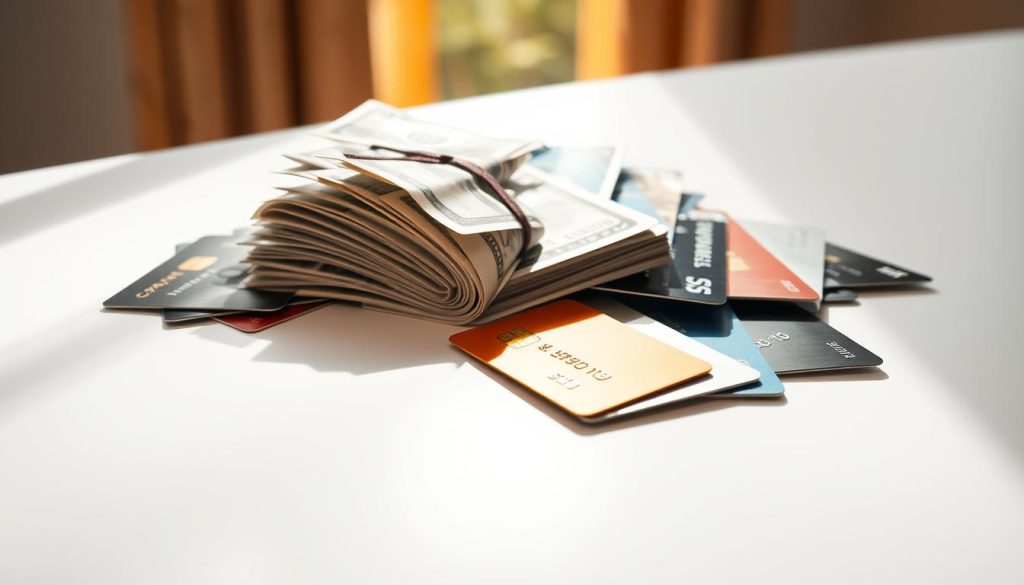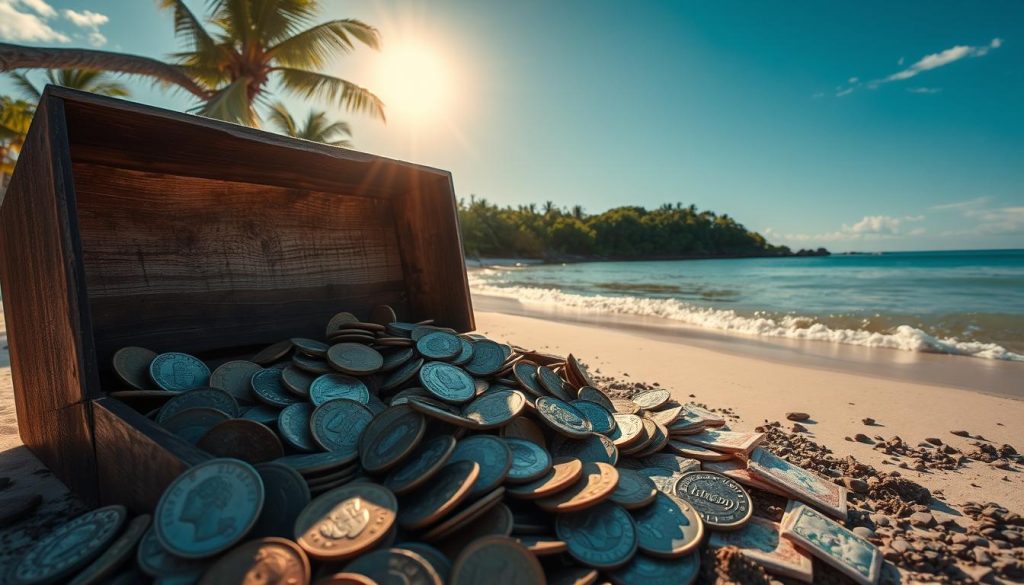Did you know that Navassa Island is one of the few uninhabited territories under U.S. administration? This remote Caribbean gem is not only rich in history but also boasts a unique ecological landscape. Planning a trip here requires more than just packing your bags—it’s about preparing your finances for a seamless travel experience.
Understanding the local currency and payment methods is crucial. While U.S. dollars are widely accepted, using the Jamaican dollar can save you money. This guide will help you navigate the financial aspects of your journey, from exchange rates to payment tips.
Whether you’re exploring its pristine beaches or diving into its vibrant history, being financially prepared ensures a stress-free adventure. Let’s dive into the essentials of managing your money and making the most of your time on this fascinating island.
Introduction to Navassa Island: Location, History, and Disputed Status
Nestled in the Windward Passage, this territory is a blend of natural beauty and historical intrigue. Its geographic coordinates place it squarely in the Caribbean, making it a unique part of the region. The area spans approximately 2 square miles, with coral limestone cliffs and a rugged coastline that add to its charm.

This uninhabited land holds significant importance in the Caribbean. Its natural features, including unique wildlife and pristine landscapes, make it a haven for explorers. Over time, it has become a symbol of the region’s ecological diversity.
Geographic Overview and Caribbean Significance
The territory’s location in the Windward Passage connects it to major shipping routes. Its small size belies its strategic value. The area is home to rare species and untouched ecosystems, making it a vital part of the Caribbean’s natural heritage.
Historical Milestones and Territorial Claims
The history of this land is marked by exploration and conflict. In the 19th century, the U.S. claimed it under the Guano Islands Act. However, Haiti has also asserted its rights to the territory, leading to a long-standing dispute.
“The Guano Islands Act of 1856 marked a turning point in the history of this land.”
Over time, treaties and constitutions have shaped its status. Understanding this background is crucial for travelers. It provides context for the area’s unique challenges and opportunities.
Navassa Island: Ultimate Travelers Guide to Currencies & Payments
When planning your trip, understanding the financial landscape is just as important as packing your essentials. Knowing your options for currency and payments can save you time and hassle during your adventure.
Currency Options and What to Expect
The U.S. dollar is widely accepted, but carrying a mix of cash and cards is highly recommended. This mix cash card approach ensures flexibility in transactions, especially in areas with limited banking services.
While ATMs are scarce, major towns may have limited access. It’s wise to withdraw cash in advance and carry extra for emergencies. This way, you’re prepared for any situation.

Practical Payment Methods for Your Visit
Credit cards like Visa and Mastercard are accepted in larger establishments. However, smaller vendors often prefer cash. A cash card strategy helps you balance convenience and practicality.
Here’s a quick comparison of payment methods:
| Payment Method | Advantages | Considerations |
|---|---|---|
| Cash | Widely accepted, no fees | Limited availability of ATMs |
| Credit Cards | Convenient, secure | May incur foreign transaction fees |
| Debit Cards | Easy access to funds | ATM withdrawal limits |
Early financial planning is key. Check with your bank about international fees and notify them of your travel dates. Being ’re prepared with multiple payment options ensures a smooth experience.
Whether you’re exploring remote areas or enjoying local markets, a carry mix cash approach keeps you ready for anything. This flexibility is essential for a stress-free journey.
Preparing Your Finances for a Navassa Island Adventure
Managing your finances effectively is the first step to a smooth and enjoyable trip. Whether you’re exploring remote areas or enjoying local markets, being financially prepared ensures you’re ready for anything. Here’s how to make the most of your money and avoid unnecessary stress.
Essential Tools and Payment Strategies
Start by monitoring the exchange rate before your trip. Checking live rates helps you identify the best time to convert your money. Using local banks or reputable currency exchange services often provides a better rate compared to airports or hotels.
Carry a mix of cash and cards for flexibility. While U.S. dollars are widely accepted, having a currency exchange plan ensures you’re prepared for all situations. Here’s a quick comparison of your options:

| Option | Advantages | Considerations |
|---|---|---|
| Local Banks | Better rates, secure transactions | Limited hours, may require documentation |
| Currency Exchange Bureaus | Convenient, quick service | Higher fees, varying rates |
| ATMs | Access to local currency | Withdrawal limits, potential fees |
Notify your bank of your travel dates to avoid issues with card transactions. Researching local payment practices ensures you’re prepared for any financial situation. With the right tools and strategies, you can focus on enjoying your adventure without worrying about money.
Historical Evolution of Currency: Guano Mining and Its Economic Impact
The story of guano mining is deeply intertwined with the economic history of this remote territory. In the late 19th century, guano became a valuable resource, driving financial growth and shaping early payment systems. Understanding this history offers a fascinating glimpse into how economic activities influenced local practices.

Guano Mining History and Its Influence on Currency
During its peak, guano mining generated up to $2 million annually, making it a cornerstone of the local economy. Workers extracted over 1.5 million tons of guano, which was sold at $8 to $10 per ton. This industry employed over 200 people, creating a bustling marketplace where transactions were frequent.
Early payment methods were shaped by the needs of this labor-intensive industry. Workers were often paid in cash, which became the preferred payment method for small purchases and daily needs. This reliance on cash laid the foundation for financial practices still seen today.
“The guano industry not only fueled economic growth but also established a cash-based system that persists in modern transactions.”
Here are some key ways guano mining influenced financial practices:
- Cash Dominance: The need for quick, reliable payments made cash the go-to option.
- Marketplace Dynamics: Vendors and workers relied on cash for small transactions, fostering a cash-centric culture.
- Economic Legacy: The industry’s decline left a lasting impact on local financial strategies.
Today, remnants of this system can be seen in the preference for cash in certain areas. While modern payment options like cards are available, understanding this history helps you appreciate the local financial culture. It also explains why carrying cash is still a practical method for small purchases and tips.
By exploring this economic heritage, you gain a deeper understanding of the territory’s financial landscape. This knowledge not only enriches your travel experience but also prepares you for navigating local payment practices with ease.
Navigating Modern Banking and Currency Exchange in U.S. Territories
Understanding how to manage your finances in U.S. territories can make your trip smoother and more enjoyable. Whether you’re exploring remote areas or enjoying local markets, knowing your banking options is key. This section will guide you through modern financial practices to help you avoid unnecessary fees and stay secure.
Understanding Exchange Rates and Local Banking Options
When traveling, monitoring the exchange rate is crucial. Local banks often offer better rates compared to airport kiosks or hotels. This can save you money and ensure you get the most out of your budget. Always check live rates before converting your currency.
Using a local bank for transactions is a smart move. While U.S. dollars are widely accepted, having access to local currency can be helpful for smaller purchases. Many banks also provide secure ATM services, making it easy to withdraw cash when needed.
Here’s a quick comparison of banking options:
| Option | Advantages | Considerations |
|---|---|---|
| Local Banks | Better rates, secure transactions | Limited hours, may require documentation |
| ATMs | Access to local currency | Withdrawal limits, potential fees |
| Currency Exchange Bureaus | Convenient, quick service | Higher fees, varying rates |
Cards like Visa and Mastercard are card widely accepted in tourist areas. However, smaller vendors often prefer cash. Carrying a mix of both ensures you’re prepared for any situation. Notify your bank of your travel dates to avoid issues with card transactions.
Minimizing transaction fees is another important step. Avoid using airport kiosks for currency exchange, as they often charge higher fees. Instead, opt for local banks or reputable exchange services. This way, you can focus on enjoying your trip without worrying about unnecessary costs.
By following these tips, you can navigate modern banking and currency exchange with ease. Being financially prepared ensures a stress-free and enjoyable adventure.
Travel Preparedness and Payment Security on Navassa Island
Ensuring your financial safety is a top priority when exploring remote destinations. A well-thought-out plan for managing your money can make your trip smoother and more enjoyable. By combining cash and card strategies, you can maintain flexibility and avoid unnecessary stress.
Combining Cash and Card Strategies for Flexibility
Carrying a mix of cash and cards is essential for a seamless travel experience. While cards like Visa and Mastercard are widely accepted, smaller vendors often prefer cash. This dual approach ensures you’re prepared for any situation, whether you’re dining at a local café or purchasing souvenirs.
Here are some practical tips to balance your payment methods:
- Withdraw cash in advance to avoid relying solely on ATMs, which may be scarce.
- Notify your bank of your travel dates to prevent card issues during your trip.
- Keep a small amount of cash for emergencies or unexpected expenses.
Protecting Your Finances While on the Go
Monitoring your transactions is crucial for financial security. Regularly check your bank statements for unauthorized charges. If you notice anything suspicious, report it immediately to your bank.
When using ATMs, choose secure locations like banks or well-lit areas. Avoid sharing your PIN or card details with anyone. These simple precautions can help protect your funds and ensure a stress-free journey.
Finally, consider carrying a backup card or emergency funds. This extra layer of security ensures you’re prepared for unexpected situations, such as lost or stolen cards. By following these tips, you can focus on enjoying your adventure without worrying about financial mishaps.
Integrating Local Payment Culture, Custom, and Modern Payment Methods
Understanding local payment culture is key to a smooth and respectful travel experience. It’s not just about knowing what to pay but also how to pay. Local customs and etiquette can significantly influence your interactions with vendors and service providers.
While modern payment methods like credit cards are convenient, they don’t replace the need to understand traditional expectations. Many locals, especially in smaller settlements, prefer cash for transactions. This ensures you’re prepared for any situation, whether you’re buying souvenirs or dining at a local café.
Local Etiquette and Payment Expectations
Respectful interactions are essential when navigating local payment customs. Here are some practical tips to help you blend in:
- Carry Cash: Smaller vendors often prefer cash, so having some on hand ensures you’re prepared for small purchases.
- Check Preferences: Before making a payment, ask about the preferred method to avoid misunderstandings.
- Be Polite: A friendly attitude goes a long way in making transactions smoother and more enjoyable.
By following these guidelines, you can ensure you’re prepared for any situation involving local customs and modern payment practices. This balance not only makes your journey easier but also helps you connect more meaningfully with the local culture.
Conclusion
Planning your finances for a remote destination requires careful consideration and preparation. Understanding the official currency and carrying local currency ensures you’re ready for any situation. A mix of cash and cards offers flexibility, making your trip smoother and more enjoyable.
Historical influences have shaped today’s payment methods, making cash essential for small transactions. By staying informed about local banking practices, you can protect your money and avoid unnecessary fees. This guide serves as a case study for thorough financial planning, ensuring your journey is stress-free.
With the right plan, your adventure can be both enriching and seamless. Use these insights to make the most of your trip, and enjoy every moment with confidence.
The above is subject to change.
Check back often to TRAVEL.COM for the latest travel tips and deals.
